Preserving your own food and building up your food storage isn’t easy. It takes a lot of time, money, and effort but putting up your harvest and having food on hand is an essential part of any survival plan.
Dehydrating your own food can make the process quicker, easier, and cheaper. You won’t have to spend money on fancy freeze dried backpacking meals or sit around watching a pressure canner.
Along with being shelf stable dehydrated food is also lightweight and healthy making it great for a SHTF scenario. The process of dehydrating food destroys less of its nutrients than canning and it will last longer than frozen food even if you still have electricity.
Disclosure: This post has links to 3rd party websites, so I may get a commission if you buy through those links. Survival Sullivan is a participant in the Amazon Services LLC Associates Program. As an Amazon Associate, I earn from qualifying purchases. See my full disclosure for more.
Dehydrators are also very affordable and solar dehydrators can be made at home so you can preserve food energy free.
Be sure to check specific instructions for what you’re dehydrating. Different foods have different dehydrating temperatures and times. Some should even be cooked or blanched before dehydrating.
Vegetables
If you garden or stockpile from your local farmers market dehydrating vegetables can be an extremely affordable and easy way to add tons of nutrition to your pantry. Many vegetables are delicious eaten dry or rehydrated.
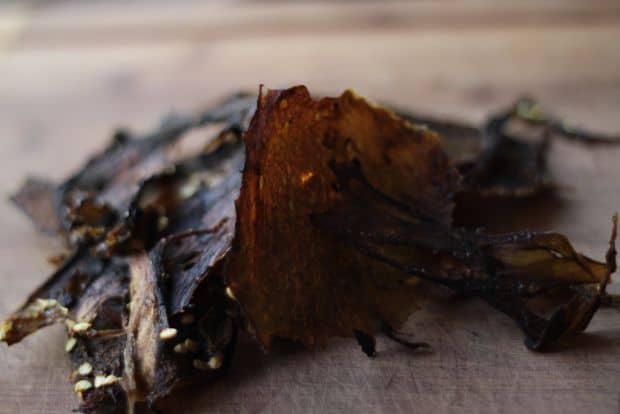
Peppers
While peppers can be pickled or pressure canned dehydrating is still a great option. It’s less work and the peppers don’t get soft like pressure canned peppers do. Chili peppers can also be ground into powder after drying.
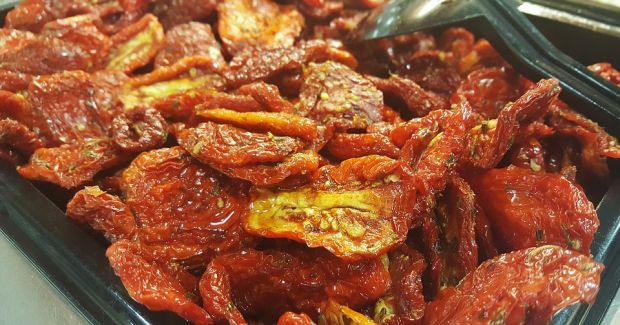
Tomatoes
Sun dried tomatoes are absolutely delicious but in much of the world they can’t actually be dried with just sunlight. Thankfully they taste just as good in the dehydrator.
Tomato skins left over from canning can also be dehydrated, powdered and added to meals for flavor and thickening.
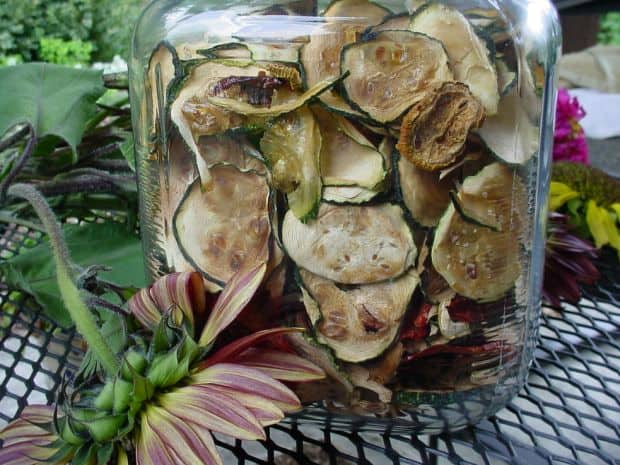
Summer Squash & Zucchini
If you have a garden chances are you have tons of summer squash to put up. Unfortunately canned squash can often turn out mushy and flavorless. Dehydrated squash on the other hand keeps some of its texture and flavor and can be tossed in soups, stews, and sauces.
Pumpkin & Winter Squash
Pumpkin or squash purees are easily dehydrated and then reconstituted to go with meals or to use as pie filling. They can also be powdered to create pumpkin spice flavoring.
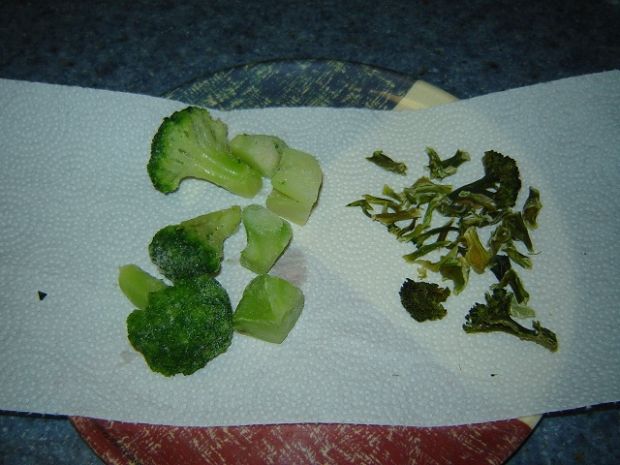
photo credits to Backdoor Survival via Flickr under a CC BY-NC 2.0 license
Brocolli
This veggie is packed with vitamins C, B1, B2, B3, B6 and antioxidants, perfect for your survival stockpile.
Green Beans
Besides rehydrating them for meals, many people also eat dehydrated green beans as a snack.
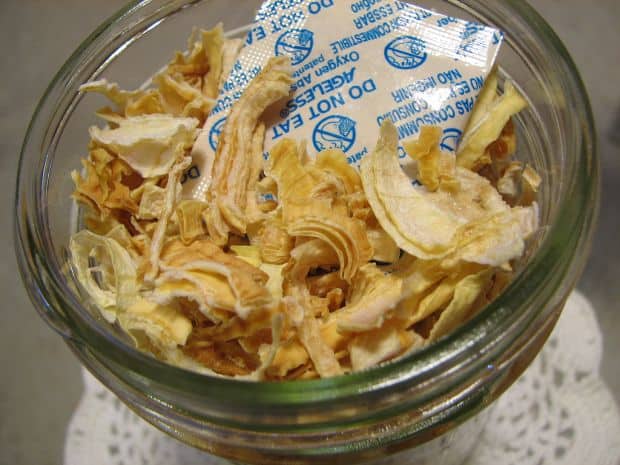
photo by vigilant20 (דָרוּך) via Flickr under a CC BY-NC-ND 2.0 license
Onions
Dehydrated onions can be easily ground into onion powder and take up much less space then fresh onions in storage.
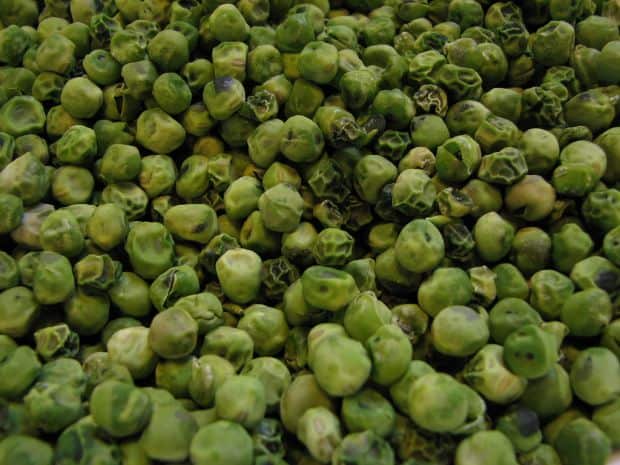
photo credits to vigilant20 (דָרוּך) via Flickr under the CC BY-NC-ND 2.0 license
Peas
Peas are simple to dehydrate making them ready to go for quick meals.
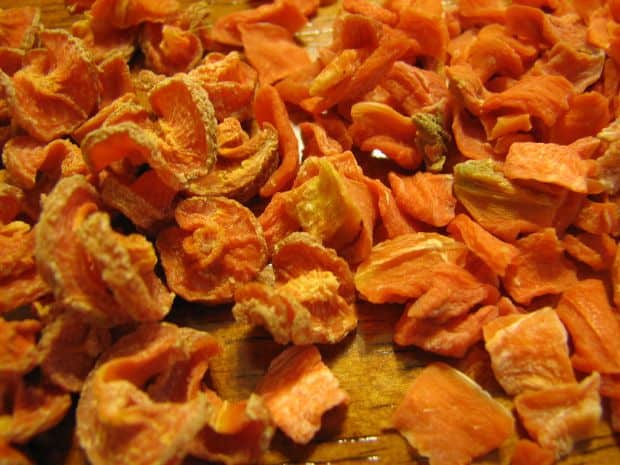
photo by vigilant20 (דָרוּך) via Flickr under a CC BY-NC-ND 2.0 license
Carrots
They can be rehydrated and used in other meals or powdered with other vegetables like onions, peas, and beans to make a flavorful vegetable powder.
Lettuce
It sounds weird but if you’ve had a big lettuce harvest there’s not really any other way to store it longterm. Dehydrated and powdered lettuce can be snuck into smoothies and meals for extra nutrients.
Other Greens
Many greens like spinach, kale, and swiss chard can be dried for a number of uses. They can be powdered, made into chips, or added to meals.
Fruit
Store bought dried fruit can be super expensive but making your own is so easy! Grow your own, look for fruit on sale, or visit a pick your own farm for the best deal.
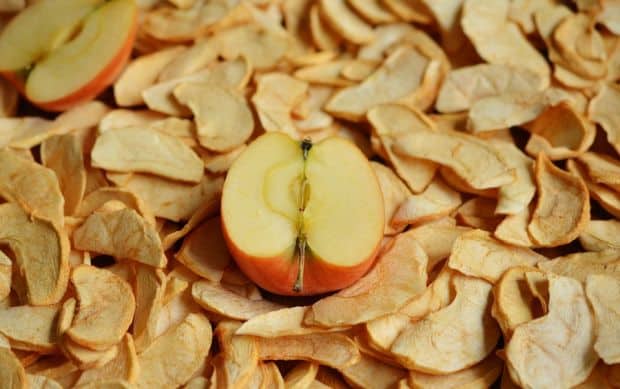
Apples
Just slice them up and spread them on a dehydrator tray. Apples pieces can be dried with or without the peel. Dried apples are great for tossing into homemade trail mix or as a topping for oatmeal or cereal.
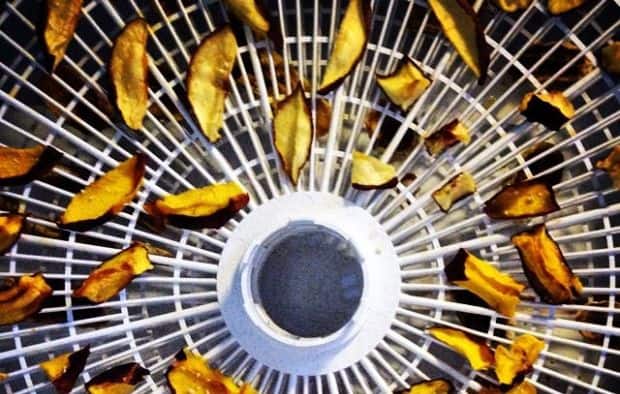
photo credits Duncan Creamer via Flickr under a CC BY-NC-ND 2.0 license
Nectarines
Yummm.
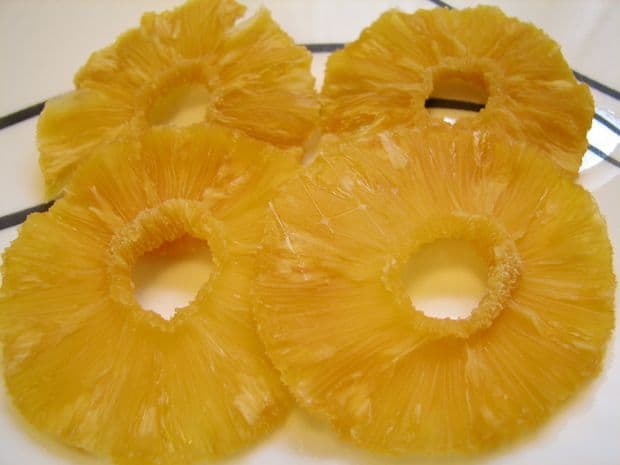
photo by vigilant20 (דָרוּך) via Flickr under a CC BY-NC-ND 2.0 license
Pineapple
Again, yummm.
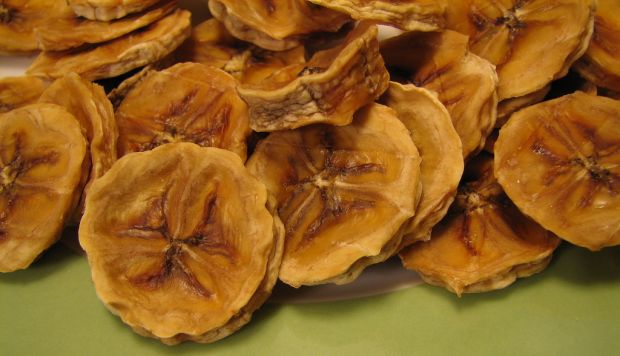
photo by vigilant20 (דָרוּך) via Flickr under a CC BY-NC-ND 2.0 license
Bananas
Dried banana slices are wonderfully sweet and make excellent snacks, especially for kids.
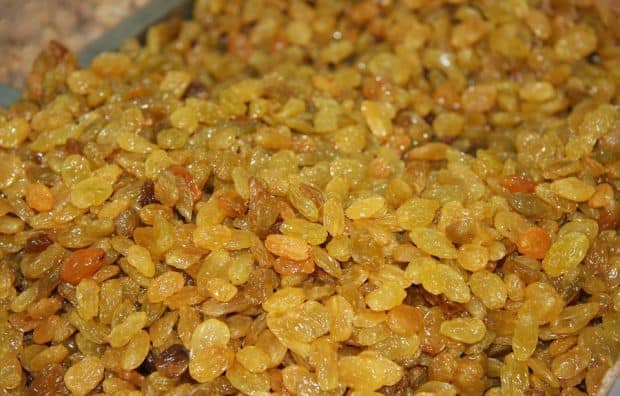
Grapes
Make your own raisins! If you grow your own you can have a much bigger variety than store-bought raisins.

photo credits: Michael Coté via Flickr under the CC by 2.0 license
Strawberries
If you’re craving candy but don’t want the sugar, dried strawberries may be the solution. They’re tasty but healthy.
Watermelon
There’s not many ways to preserve watermelon but it can be dried into what’s often called watermelon candy.
Plums
Make your own prunes.
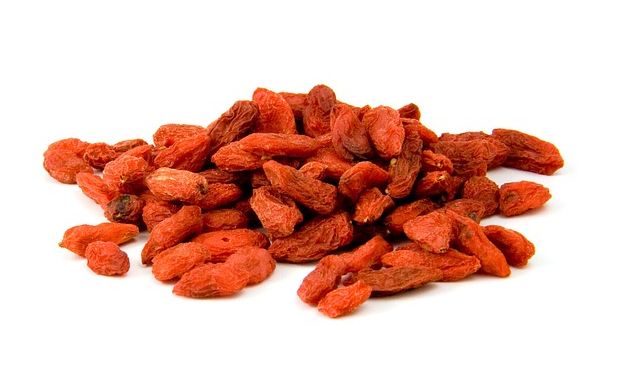
Berries
Blueberries, raspberries, blackberries and other small berries can be dried whole and added to homemade granolas, trail mixes, or rehydrated for use in other recipes.
Herbs
Most culinary herbs are easy to grow and dehydrate. As herbs are generally expensive but relatively easy to grow you can save a lot of money by growing and dehydrating your own for relatively little effort. You can also dehydrate herbs to make your own herbal teas or remedies. These are just a few examples.
Basil
Easy to dry and a staple in many homes.
Sage
Dried sage is delicious and perfect for making biscuits and gravy!
Parsley
While often used as a garnish parsley can be a delicious addition to many meals and offers loads of nutrients. Some even consider it a superfood.
Cilantro
Having dried cilantro on hand can be perfect for adding to homemade salsa or other dishes.
Mint
Dry your own for some soothing tea.
Yarrow
Dried yarrow helps stop bleeding and can be powdered to pack into wounds in emergencies.
Chamomile
Chamomile is easy to grow and drying your own tea will save you money.
Lemon Balm
Dried lemon balm can also be made into a delicious, lemony tea.
Proteins
Sourcing protein in a survival situation is extremely important. Having some of these dried foods on hand can keep you full and energized in SHTF event.
Ground Meat
Ground meat like turkey or hamburger can be cooked and dehydrated. It’s easy to rehydrate.

Jerky
Almost any kind of meat can be dried into jerky. Even chicken and fish. Plus it’s so much better than store-bought and is a great protein source for survival situations.
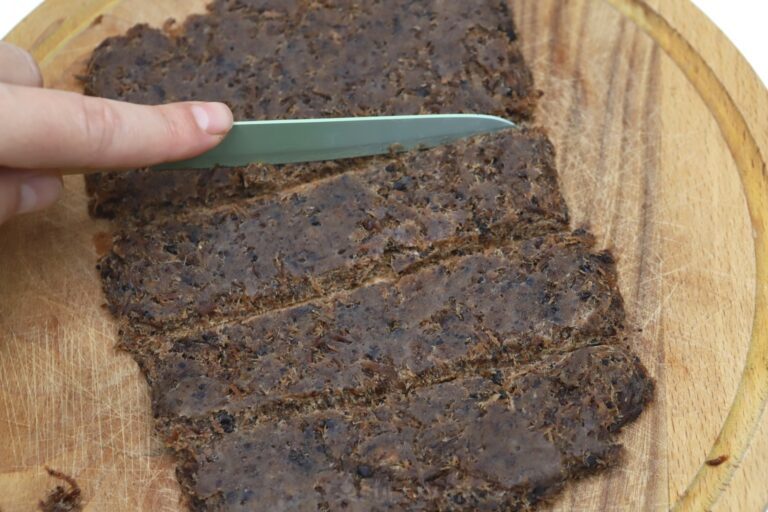
Pemmican
Pemmican is another great way to store protein for survival. It’s typically made from fat, meat, and berries though a vegetarian version can be made with nuts, coconut oil, and berries instead.

photo credits Arnold Gatilao via Flickr under a CC BY 2.0 license
Pig Skin
Eggs
If your hens are laying too many eggs for you to keep up with consider dehydrating some.
Beans
All kinds of beans can be cooked and then dehydrated to make instant beans. They’re prefect for camping or survival situations because they’re light, shelf stable, packed with protein, and have a short cook time.
Edamame
Edamame is another great protein source for survival situations once it’s dehydrated.
Snacks
These dehydrated snacks are great to keep in the pantry to encourage healthy eating habits and lower grocery bills.
Fruit Leather
Store bought fruit leather or roll ups are often full of added sugar and preservatives. Instead you can make your own at home with pureed fruit or applesauce.
Veggie Chips
Many vegetables like carrots, kale, sweet potatoes, and beets can be seasoned and dried to make a healthy snack.
Candied Ginger
Candied ginger is a tasty treat but is also highly medicinal and easy to make and dehydrate right at home.
Miscellaneous
The abundance of food that can be safely dehydrated will definitely surprise you. Some foods are dehydrated simply to preserve a harvest while dehydrating others makes cooking from scratch easier.
Rice
If you like to cook with or stockpile instant rice it’s surprisingly easy to make at home. Just partially cook regular rice than spread it in a thin layer on a dehydrator tray.
Sprouted Grains
Sprouted flours are good for you but can be quite pricy. You can make your own by sprouting wheat berries or other grains and then dehydrating them before milling them into flour.
Wild Mushrooms
Most wild mushrooms are considered unsafe for pressure canning but any are tasty even when dehydrated. Try drying oyster mushrooms or chanterelles after your next foraging adventure.
Potatoes
Potatoes can be dehydrated in a variety of ways so that they last longer and are lighter and faster to cook, perfect for your survival food storage.
Sourdough Starter
If you’ll be going on vacation or don’t want to take care of your sourdough starter for awhile it can be dehydrated. Then it can be rehydrated whenever you’re ready to start using it again.
Cheese
Cheese can in fact be dehydrated. It’s great to make cheese powders for long term storage or camping trips. Note that it’s best to use less oily cheeses like parmesan or sharp cheddar.
Sauces
Many sauces like spaghetti sauce can be dehydrated similarly to fruit leather and then reconstituted to help make an easy lightweight meal.
Pasta
If you make your own pasta it can be dehydrated and keeps just like the store bought stuff.
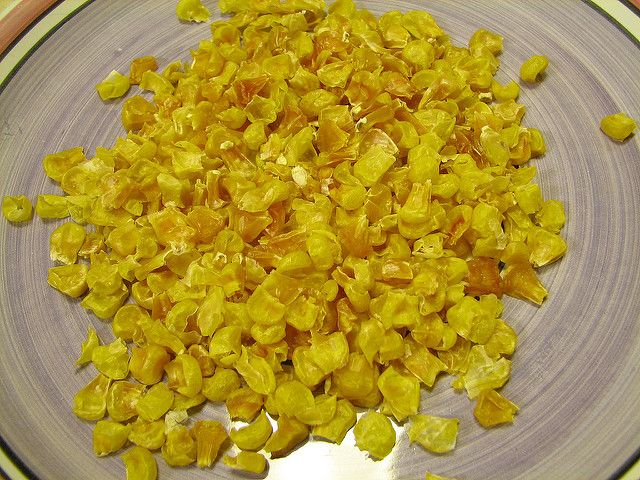
photo credits to vigilant20 (דָרוּך) via Flickr under the CC BY-NC-ND 2.0 license
Corn
Yummm.
Full Meals
By combining these different dehydrated foods you can create healthy, nearly instant meals for survival situations, camping trips, or simply after a long day. Some great examples include dehydrated beans and homemade instant rice with dried veggies or dried spaghetti sauce, dried ground meat, and pasta.
Whether your planning a backpacking trip to test your survival skills, putting up your harvest, or trying to stock up for various emergencies, dehydrating food is a great idea.
What’s your favorite dehydrated food? Are there any great foods missing from this list?
Jordan Charbonneau is an organic vegetable farmer and off grid homesteader from West Virginia. She graduated from Sterling College with bachelors degrees in ecology and environmental humanities in 2015. She also completed an Appalachian Trail thru-hike and enjoys learning about permaculture, herbalism, and wild edibles in her free time. She loves to share it all and has been a writer and blogger since 2013.

Jordan, just found your site. Very informative. Do you have any information on the medicinal use of plants/herbs. Great info, thanks. God Bless.
Juanita
i have store bought canned pie fillings. wondering if I can dehydrate them for longer storage.